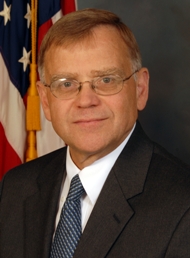Food
Gulf of Mexico Oil Spill Update
For Consumers
Reopening of Closed Waters Information by State | Update: Gulf Seafood is Safe to Eat After Oil SpillJanuary 11, 2012
Michael R. Taylor
|
Information current as of Friday, September 2, 2011
FDA's Role In Seafood Safety
FDA operates a mandatory safety program for all fish and fishery products under the provisions of the Federal Food, Drug and Cosmetic Act, the Public Health Service Act, and related regulations. The FDA program includes research, inspection, compliance, enforcement, outreach and the development of regulations and industry guidance. FDA works closely with NOAA and the states whenever commercial fishing waters are closed for public health reasons and again when they are reopened to harvest.
Multi-Government Agency Response to the Gulf of Mexico Oil Spill
When the Gulf of Mexico oil spill began in 2010, the FDA, the National Oceanic and Atmospheric Administration’s (NOAA) National Marine Fisheries Service, the Environmental Protection Agency (EPA), the U.S. Coast Guard, and the Gulf coast states took unprecedented steps to ensure that the seafood harvested from the Gulf was safe -- first by closing areas exposed to the oil and then by establishing a reopening protocol designed to ensure that seafood from any given area was safe from harmful oil and dispersant residues before the area reopened to harvest.
At the height of the oil spill more than one third of the federal waters in the Gulf and much of the state waters were closed to harvesting. After the oil began to dissipate, the states and federal government conducted extensive sampling and testing of fish, shrimp, crabs, and oysters. Only after all samples collected from an area passed both sensory and chemical testing, was a harvest area allowed to reopen.
All of the federal waters and all but a few state harvest waters have reopened and the tests have shown that the seafood from these reopened areas is as safe to eat as it was before the oil spill.
Still, just to be sure that we did not miss anything, federal and state officials continue to collect and test seafood from the Gulf. The seafood we have collected continues to be free from harmful oil and dispersant residues.
Call 1-888-INFO-FDA with questions or concerns about seafood or to report any seafood you have purchased that you suspect of being contaminated with oil.

Photo Courtesy of the New Orleans Times-Picayune
Dr. Margaret A. Hamburg, Commissioner of Food and Drug,
eats some seafood gumbo in New Orleans.
Assessing the Impact of the Oil Spill
Surveillance Samples
- DWH Comparison Levels of Select Metals at Mussel Watch Sites
- Arsenic – January 20, 2012 (PDF: 436KB) New
- Cadmium - January 20, 2012 (PDF: 436KB) New
- Copper - January 20, 2012 (PDF: 436KB) New
- Lead - January 20, 2012 (PDF: 442KB) New
- Nickel - January 20, 2012 (PDF: 434KB) New
- Selenium - January 20, 2012 (PDF: 453KB) New
- Vanadium - January 20, 2012 (PDF: 155KB) New
- DWH Phase III Surveillance Samples - Metals: October 12, 2010 to June 21, 2011 (PDF: 22KB)
FDA tested samples of crab, oysters, and shrimp collected from harvest areas that had been closed due to the Deepwater Horizon oil spill and subsequently reopened, to determine if the seafood contained elevated levels of arsenic, cadmium, lead, or mercury. The observed levels were then compared to baseline levels from samples that were collected prior to the oil spill or from areas that were not directly impacted by the oil spill. FDA's testing showed that the levels of arsenic, cadmium, lead, and mercury were consistent with the background levels found in seafood not impacted by the oil spill and do not present a public health concern.
- DWH Phase III Surveillance Samples - PAH/DOSS: October 12, 2010 to June 21, 2011 (PDF: 40KB)
- FDA Memo on Completion of Surveillance Samples Collected June 15, 2010 to July 8, 2010 (PDF: 32KB)
- PAH Results of Surveillance Samples Collected June 15, 2010 to July 8, 2010 (PDF: 23KB)
Background on Polycyclic Aromatic Hydrocarbons (PAHs) and Testing Methods
- New Alternative Method for PAH Detection in Seafood (PDF: 377KB)
- Questions & Answers: New Testing Method for Chemical Analysis of Seafood Samples for Presence of Oil Residues
- Polycyclic Aromatic Hydrocarbons Information from Agency for Toxic Substances and Disease Registry (ATSDR)
- Investigation of Corexit® 9500 Dispersant in Gulf of Mexico Seafood Species (PDF: 576 KB)
Background on Dioctyl Sodium Sulfosuccinate (DOSS) and Testing Methods
- Press Release: NOAA and FDA Announce Chemical Test for Dispersant in Gulf Seafood October 29, 2010
- PAH and DOSS Results Summary From FDA Testing Labs (PDF: 85KB)
- New Method for DOSS Detection in Seafood (PDF: 201KB)
- Level of Concerns for DOSS (PDF: 345KB)
Letters, Memos, & Fact Sheets
- FDA Letter to Fish and Fishery Products Industry Regarding the Gulf of Mexico Oil Spill (PDF: 1.50MB)
- May 14, 2010 FDA Memo on Chemical Dispersants Used in the Gulf Oil Spill (PDF: 1.07MB)
- Seafood Safety and Dispersants Fact Sheet (PDF: 95KB)
Maps and Images
- NOAA Interactive Map - Environmental Response Management Application (ERMA)
- Deepwater Horizon Images on Flickr

- NASA images
- Fish and Wildlife Service Maps
- Oil Spill Cam - Select Committee on Energy Independence and Global Warming









